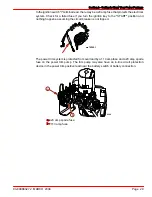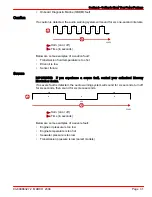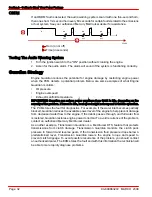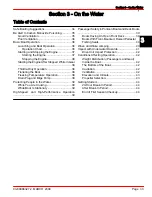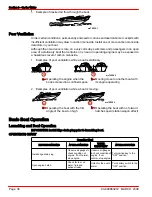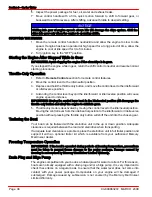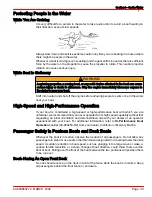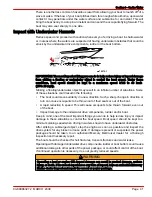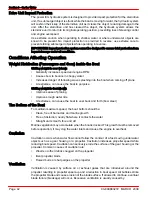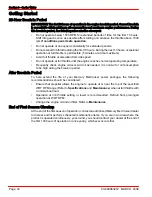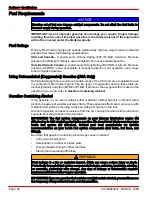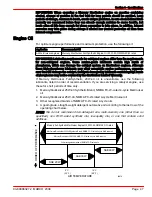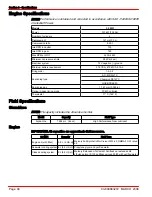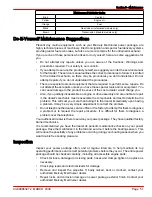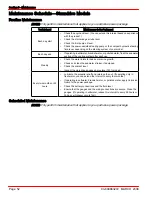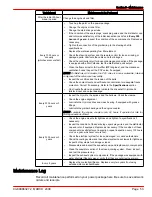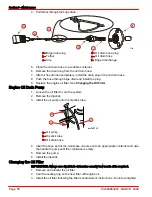
Section 3 - On the Water
Page 42
90-899883272 MARCH 2008
Drive Unit Impact Protection
The power trim hydraulic system is designed to provide impact protection for the sterndrive
unit. If a submerged object is struck while the boat is moving forward, the hydraulic system
will cushion the kickup of the sterndrive unit as it clears the object, reducing damage to the
unit. After the sterndrive unit has cleared the object, the hydraulic system allows the
sterndrive unit to return to its original operating position, preventing loss of steering control
and engine overspeed.
Use extreme caution when operating in shallow water or where underwater objects are
known to be present. No impact protection is provided in reverse; use extreme care to
prevent striking submerged objects while operating in reverse.
IMPORTANT: Impact protection system cannot be designed to ensure total protection from
impact damage under all conditions.
Conditions Affecting Operation
Weight Distribution (Passengers and Gear) Inside the Boat
Shifting weight to rear (stern):
• Generally increases speed and engine RPM
• Causes bow to bounce in choppy water
• Increases danger of following wave splashing into the boat when coming off plane
• At extremes, can cause the boat to porpoise
Shifting weight to front (bow):
• Improves ease of planing
• Improves rough water ride
• At extremes, can cause the boat to veer back and forth (bow steer)
The Bottom of the Boat
To maintain maximum speed, the boat bottom should be:
• Clean, free of barnacles and marine growth
• Free of distortion; nearly flat where it contacts the water
• Straight and smooth, fore and aft
Marine vegetation may accumulate when the boat is docked. This growth must be removed
before operation; it may clog the water inlets and cause the engine to overheat.
Cavitation
Cavitation occurs when water flow cannot follow the contour of a fast‑moving underwater
object such as a gear housing or a propeller. Cavitation increases propeller speed while
reducing boat speed. Cavitation can seriously erode the surface of the gear housing or the
propeller. Common causes of cavitation are:
• Weeds or other debris snagged on the propeller
• Bent propeller blade
• Raised burrs or sharp edges on the propeller
Ventilation
Ventilation is caused by surface air or exhaust gases that are introduced around the
propeller resulting in propeller speed‑up and a reduction in boat speed. Air bubbles strike
the propeller blade and cause erosion of the blade surface. If allowed to continue, eventual
blade failure (breakage) will occur. Excessive ventilation is usually caused by:
Summary of Contents for 3.0 MPI
Page 8: ...Page iv 90 899883272 MARCH 2008 ...
Page 26: ...Section 1 Warranty Notes Page 18 90 899883272 MARCH 2008 ...
Page 92: ...Section 5 Maintenance Notes Page 84 90 899883272 MARCH 2008 ...
Page 104: ...Section 6 Storage Notes Page 96 90 899883272 MARCH 2008 ...
Page 110: ...Section 7 Troubleshooting Notes Page 102 90 899883272 MARCH 2008 ...


